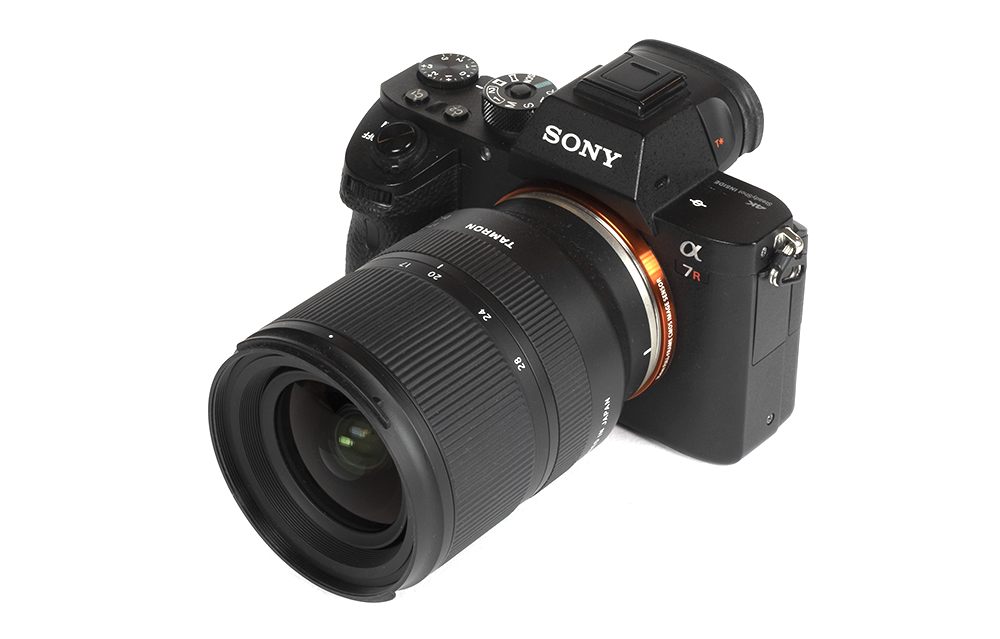by Klaus Schroiff, published February 2021
Introduction
Tamron has been an early adopter of the mirrorless concept so it’s not surprising that they are offering a vast number of corresponding lenses across most segments by now. One of them is the Tamron 17-28mm F/2.8 Di III RXD. Tamron is following an interesting philosophy with their fast f/2.8 zoom lenses. While Sony and Sigma (ART) are embracing high-performance priority, Tamron is going for compactness and low weight – which is certainly an attractive proposition for many buyers. And light-weight f/2.8 zoom lenses are an even rarer breed. Just to give you an idea – its main competitor, the Sigma 14-24mm f/2.8 DN weights almost twice as much. At around 900 USD/EUR, it also undercuts the competition quite a bit. Thus it’s hardly surprising that Tamron had quite a run among buyers lately.
In terms of build quality, it shares much of its characteristics with the Tamron 28-75mm f/2.8 Di III RXD or in other words – it feels more “consumer-ish” rather than professional grade. This applies primarily to the choice of materials. The longish, yet slim Tamron lens is based on a smooth plastic body on a metal mount. However, it’s also very obvious that it has been precisely assembled. Nothing is wobbly and the control rings operate smoothly. The physical size remains constant across the zoom range although, the inner lens tube moves a bit. When adding a filter and combined with the moisture-resistant construction, this should provide decent protection against the elements. A petal-shaped lens hood is supplied.

The RXD in the lens name stands for “Rapid eXtra-silent stepping Drive” (=the AF motor). It’s not exactly on the fast side of the spectrum but it’s fast enough for this kind of lens. Typical for Sony E-mount lenses, manual focusing works by wire and is pretty precise. Tamron has always pushed the capabilities of their lenses for close focus photography. While they didn’t go as far as with some of their other lenses, a max magnification of 1:5.2 to 1:6, it’s better than most in this class. An optical image stabilizer is not provided but, of course, available on most modern Sony cameras.
| Specifications | |
|---|---|
| Optical construction | 13 elements in 11 groups inc. 2x molded aspherical, 1x hybrid aspherical, 2x LD and 1x XLD |
| Number of aperture blades | 9 (rounded) |
| min. focus distance | 0.19-0.26m (max. magnification 1:5.2-1:6) |
| Dimensions | 73x99mm |
| Weight | 420g |
| Filter size | 67mm |
| Hood | petal-shaped (bayonet mount, supplied) |
| Other features | moisture resistant |
| Mount | Sony FE |
Distortion
With activated image auto-correction, you don’t really have to worry about image distortions. They are near-zero as you can see below.

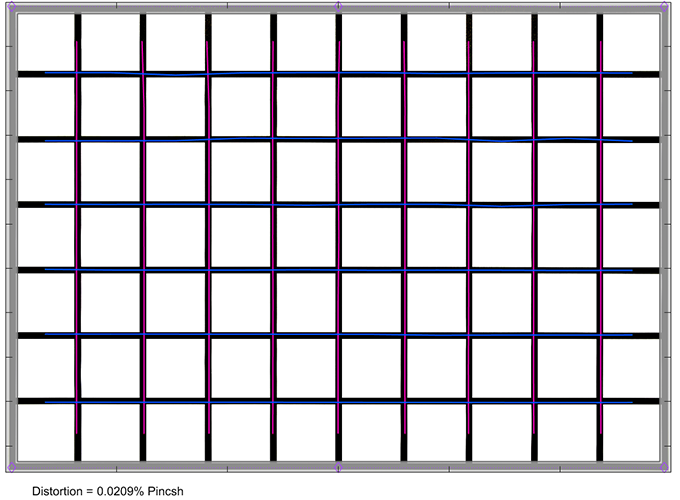
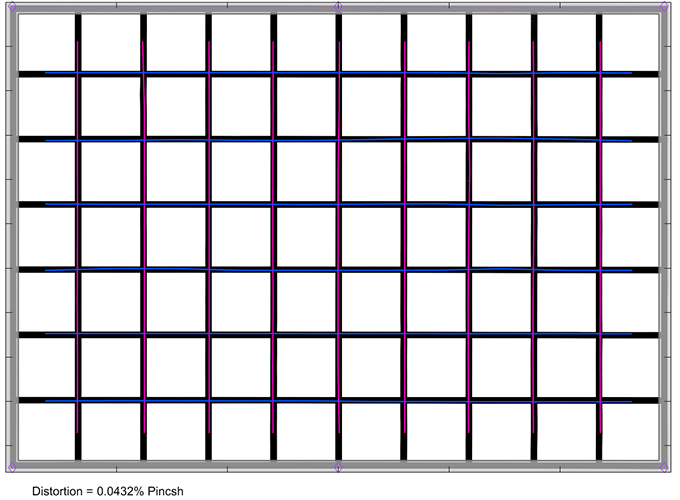
When looking at the RAW characteristic, things don’t turn as sour as you might expect if you have followed our mirrorless lens reviews over the years. The distortion figures remain very moderate with just slightly elevated figures at the extreme ends of the zoom range.
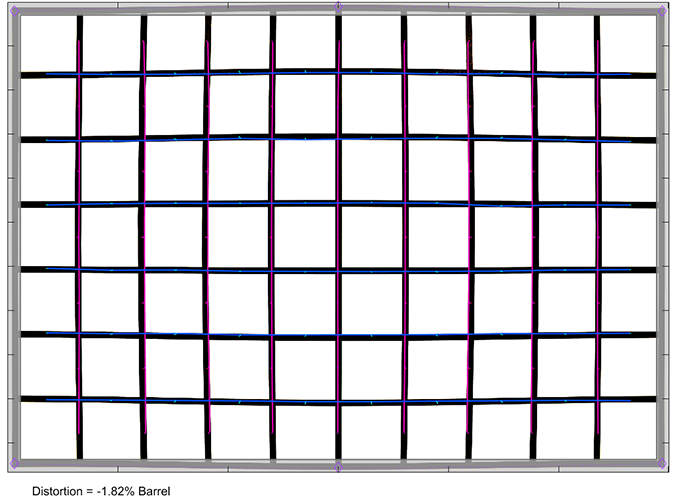

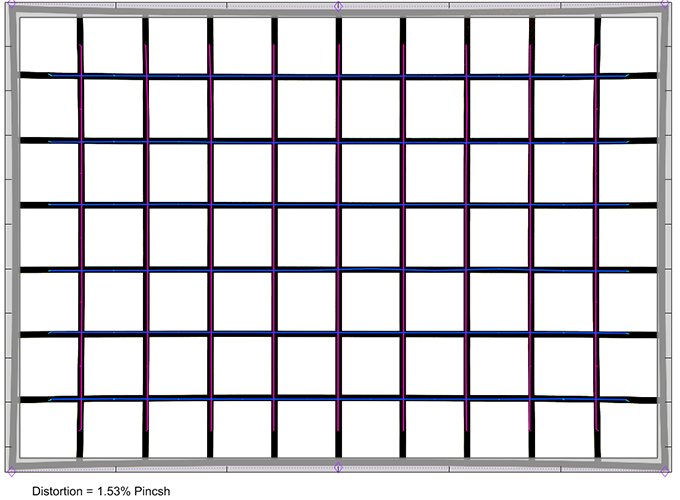
Vignetting
In standard shooting mode – thus with activated image auto-correction – the vignetting is fairly well controlled. You will still be able to spot some light falloff – just shy of 1EV (f-stops) in many scenes. The only exception is 17mm @ f/2.8 where the vignetting exceeds 1.6EV (f-stops).

The effects of auto-correction can be easily observed when comparing the above with the RAW figures. The original vignetting is rather extreme at 17mm f/2.8 and > 3EV (f-stops). That’s even beyond our usual scale for full-format lenses. Stopping down helps, but a minimum vignetting of 1.7EV isn’t glorious at 17mm f/8. The situation eases the more you zoom out but the vignetting remains an issue at f/2.8 at least. That all being said – keep in mind that ultra-wide lenses are always producing higher vignetting compared to lenses with longer focal lengths.
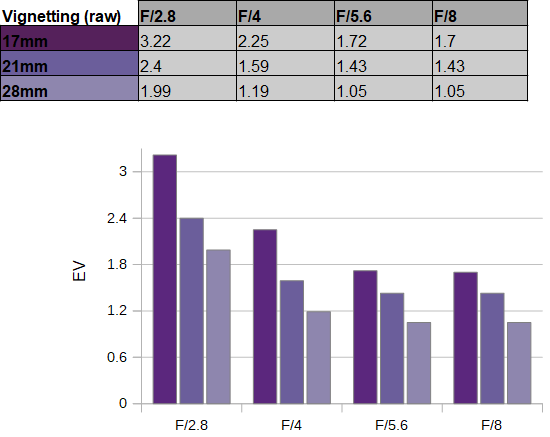
MTF (resolution at 42 megapixels)
The most interesting aspect is, of course, sharpness. Tamron decided to implement a rather short zoom range (~1.7x zoom ratio) so you may expect that the quality is very high. This is true to a certain degree here but it doesn’t tell the whole story. The lens performs best in the extreme wide to mid-range – which is good. After all, you probably don’t buy this lens for its 28mm setting. At 17mm, the center quality is excellent straight from f/2.8. The border quality makes it just across what we define as “very good” at f/2.8 – which is commendable – and it becomes slightly better at medium aperture settings. The corners are acceptable at f/2.8, but the quality increases nicely towards a good to very good peak between f/5.6 and f/8. The results are somewhat better still at the 21mm setting with no real weakness even at f/2.8. The situation changes at 28mm though. The center quality remains very high but the outer image field is a bit soft at f/2.8 and f/4. However, there’s a boost in quality at f/5.6 and f/8 with pretty sharp borders/corners. Diffraction has a fairly high impact at f/11 at all focal lengths, so unless you need the extra depth-of-field you should stay below this setting.
The field curvature is minimal. The centering quality of the tested sample was good.
Please note that the MTF results are not directly comparable across the different systems!
Below is a simplified summary of the formal findings. The chart shows line widths per picture height (LW/PH) which can be taken as a measure for sharpness. If you want to know more about the MTF50 figures you may check out the corresponding Imatest Explanations

Chromatic Aberrations (CAs)
Once again – on Sony cameras, you don’t really have to worry about chromatic aberrations due to image auto-correction. The RAW CAs aren’t brilliant at f/2.8 with a peak beyond 1.7px on the average at the image borders. Stopping down reduces the CA at f/4 already and the results are good at medium aperture settings.

Bokeh
For practical reasons, we usually don’t perform formal bokeh tests with ultra-wide lenses but some sample crops below may give you an impression of what the lens can give you in real life.
Surprisingly, highlights are very nicely rendered for an ultra-wide lens. The circular shape remains intact across most of the image field. The discs show only a minor degree of outlining and the inner zone is just slightly nervous. We’ve seen a lot worse in this class, for sure.

As far as the general rendering is concerned, things aren’t quite as impressive with very distinctive “halos” at harsh contrast transitions. However, keep in mind that most ultra-wide lenses struggle in this respect.

Sample Images
Competition
The ultra-wide segment is pretty crowded within the Sony FE ecosystem but there are probably 2 direct competitors – the Sony/Zeiss ZA 16-35mm f/4 OSS (center below) and the Sigma 14-24mm f/2.8 DN DG ART (to the right). They all have their pros and cons. The Zeiss is obviously slower but it compensates the fact to some degree via its image stabilizer (albeit that’s of limited value if you have a camera with IBIS). Performance-wise it’s probably a tad better than the Tamron in the overlapping range and it has a metal body if you prefer this. The Sigma is certain the beast in this row. It’s a much bigger and heavier lens but you can also expect it to be the best in overall quality. We haven’t tested it yet but the manufacturer MTFs are quite unreal. However, it’s also the most expensive of the bunch and you can’t use front filters.

Visual comparison courtesy of camerasize.com.
Verdict
The Tamron 17-28mm f/2.8 Di III RXD delivers a quite convincing performance with just a few caveats. Considering its ultra-wide character, it's pretty sharp where it counts the most - the wider settings. The center quality is great and the borders/corners also on a comparatively high level between 17mm and 21mm. Many ultra-wide zoom lenses struggle a bit at their "long" end and the Tamron is no exception in this respect. While the results are good from f/5.6, the outer image field could be better at larger aperture settings here. The native distortion characteristic is very decent for such a lens and there's nothing to worry about with image auto-correction. The vignetting figures are roughly in line with other lenses in this class. Reads: there's some hefty vignetting at f/2.8 in RAW images. Auto-correction eases this is a bit but, a bit surprisingly, Tamron chose a non-aggressive correction profile here so you may still be able to spot some light falloff depending on the shooting conditions. The bokeh has its pros and cons. Out-of-focus highlights are comparatively nicely rendered whereas the overall rendition can be a bit harsh.
The build quality is very good relative to its price tag. And whether you like the somewhat plasticky body material or not is also a matter of taste. However, an indisputable advantage of this approach is the very low weight of just 420g - and we are talking about an f/2.8 lens here. Unlike its fast, in-house zoom mates, it doesn't extend when zooming which is always something that we book on the plus side. The "moisture-resistant construction" seems to be somewhat inferior to other manufacturers - namely, there's no word about dust protection. However, we are talking in the context of a consumer-grade lens here. We quite liked the RXD AF motor on the 28-75mm f/2.8 but on the 17-28mm f/2.8, it's a bit on the slow side. This is usually no deal-breaker in this class though.
Overall, the Tamron 17-28mm f/2.8 Di III RXD is a solid performer. It doesn't excel in any criteria but it does the job and, possibly more important than that, it does so for a reasonable price.
-
Optical Quality
-
Build Quality
-
Price / Performance


